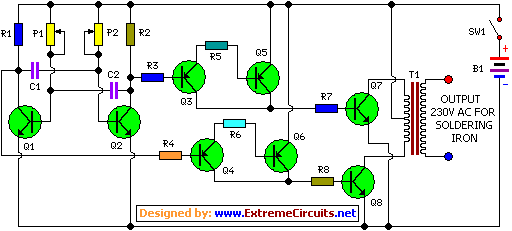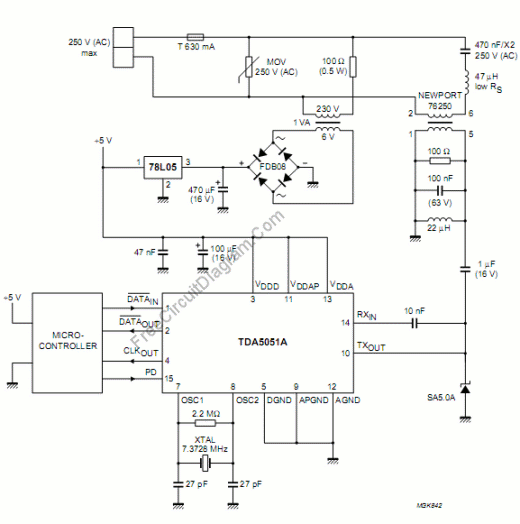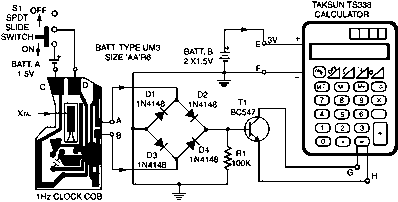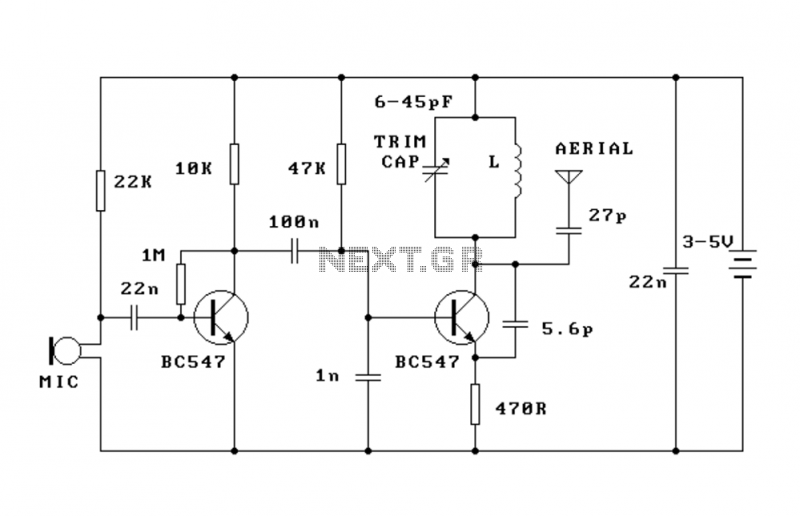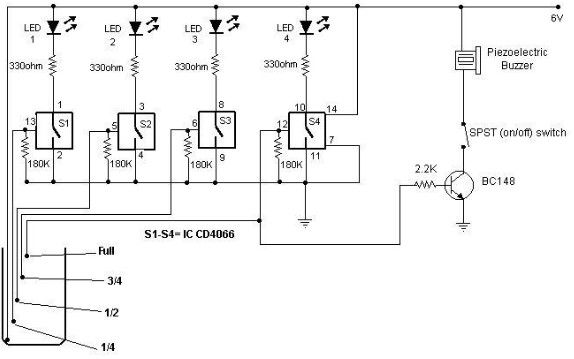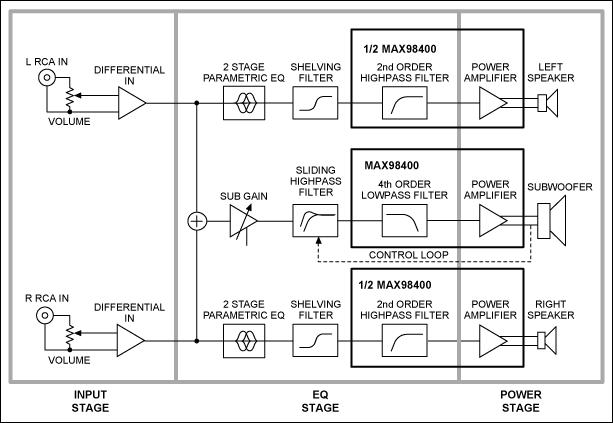
LM386 Audio Amplifier Circuit
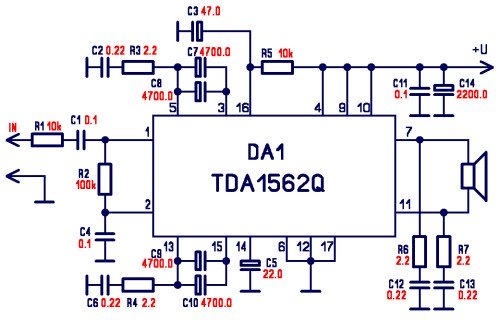
The integrated circuit LM386 is a low-power audio frequency amplifier that requires a low-level power supply, typically batteries. It is available in an 8-pin mini-DIP package. The IC is designed to provide a voltage amplification of 20 without the need for external components. However, this voltage gain can be increased up to 200 by incorporating external components. The external components, as illustrated in diagram 3.1, can be selected to achieve the desired gain. Circuit A will yield a voltage amplification of 200, while Circuit B will produce a gain of approximately 50. Circuit C is not intended for voltage amplification but will enhance the bass level by about 5 dB. It is important to connect Circuit C between pins 1 and 5 of the IC.
The LM386 is a versatile and efficient audio amplifier suitable for various applications, particularly in battery-powered devices due to its low power consumption. The 8-pin mini-DIP package facilitates easy integration into compact circuit designs. The default voltage gain of 20 is adequate for many low-power applications, such as portable audio devices and simple audio signal processing.
To achieve higher gains, external resistors and capacitors can be added. Circuit A, which achieves a gain of 200, typically requires a resistor connected between pins 1 and 8 to set the gain. This configuration allows for significant amplification of weak audio signals, making it suitable for applications where higher output levels are necessary. Circuit B, with a gain of around 50, provides a moderate amplification option for applications that do not require extreme gain levels.
Circuit C, designed specifically for bass enhancement, utilizes a different approach than the other two circuits. By connecting external components between pins 1 and 5, this configuration modifies the frequency response of the amplifier, boosting lower frequencies by approximately 5 dB. This feature is particularly beneficial in audio applications where enhanced bass response is desired, such as in music playback systems or portable speakers.
Overall, the LM386 provides a flexible solution for audio amplification, with the ability to tailor its performance to meet specific requirements through the addition of external components. This makes it an ideal choice for a range of electronic audio applications, from simple amplifiers to more sophisticated audio processing systems.The integrated chip LM386 is a low power audio frequency amplifier requiring a low level power supply (most often batteries). It comes in an 8-pin mini-DIP package. The IC is designed to deliver a voltage amplification of 20 without external add-on parts. But this voltage gain can be raised up to 200 (Vu = 200) by adding external parts. The extern al parts shown on diagram 3. 1 can be selected to get the desired gain. Circuit A will give a voltage amplification of 200. Circuit B will give a gain around 50. The circuit C is not for voltage amplification but will raise the bass level by about 5 dB. Take note that the circuit C is to be connected between pins 1 and 5 of the IC. 🔗 External reference
The LM386 is a versatile and efficient audio amplifier suitable for various applications, particularly in battery-powered devices due to its low power consumption. The 8-pin mini-DIP package facilitates easy integration into compact circuit designs. The default voltage gain of 20 is adequate for many low-power applications, such as portable audio devices and simple audio signal processing.
To achieve higher gains, external resistors and capacitors can be added. Circuit A, which achieves a gain of 200, typically requires a resistor connected between pins 1 and 8 to set the gain. This configuration allows for significant amplification of weak audio signals, making it suitable for applications where higher output levels are necessary. Circuit B, with a gain of around 50, provides a moderate amplification option for applications that do not require extreme gain levels.
Circuit C, designed specifically for bass enhancement, utilizes a different approach than the other two circuits. By connecting external components between pins 1 and 5, this configuration modifies the frequency response of the amplifier, boosting lower frequencies by approximately 5 dB. This feature is particularly beneficial in audio applications where enhanced bass response is desired, such as in music playback systems or portable speakers.
Overall, the LM386 provides a flexible solution for audio amplification, with the ability to tailor its performance to meet specific requirements through the addition of external components. This makes it an ideal choice for a range of electronic audio applications, from simple amplifiers to more sophisticated audio processing systems.The integrated chip LM386 is a low power audio frequency amplifier requiring a low level power supply (most often batteries). It comes in an 8-pin mini-DIP package. The IC is designed to deliver a voltage amplification of 20 without external add-on parts. But this voltage gain can be raised up to 200 (Vu = 200) by adding external parts. The extern al parts shown on diagram 3. 1 can be selected to get the desired gain. Circuit A will give a voltage amplification of 200. Circuit B will give a gain around 50. The circuit C is not for voltage amplification but will raise the bass level by about 5 dB. Take note that the circuit C is to be connected between pins 1 and 5 of the IC. 🔗 External reference
